Spring 2010 Solid State Drive Roundup, Part 1
Benchmark ResultS: Access Time And I/O Performance
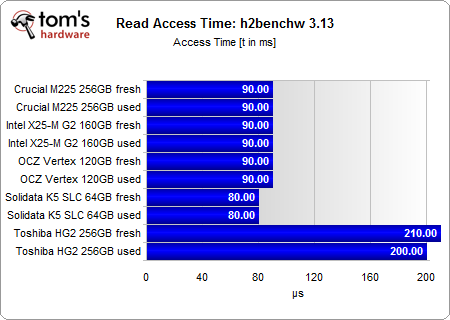
All drives show fairly fast read access times, and even Toshiba’s 200-210 µs is no reason to complain.
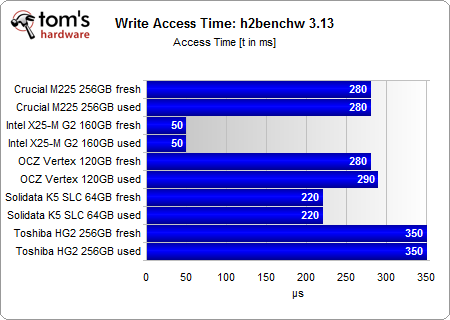
Intel may write slower, but the X25-M's write access time is actually best.
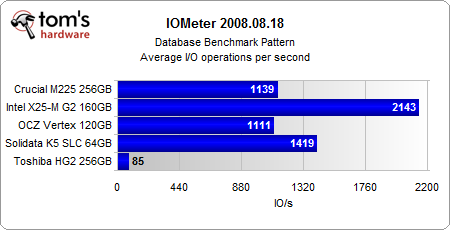
The database workload reads and writes involve mainly small block sizes. Intel dominates, followed by the SLC-based Solidata K5.
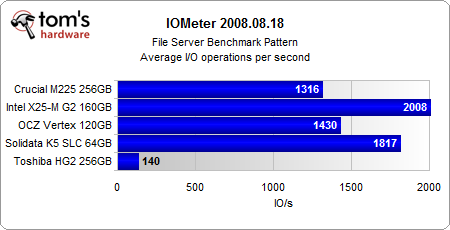
The K5’s file server performance, based on moving larger data blocks, almost reaches the Intel mark.
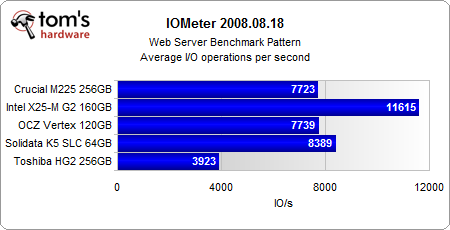
The Web server performance test only involves reads on very small blocks to represent HTML files, small GIF or PNG graphics, and such. Intel’s I/O performance is impressive, but the others also show well.
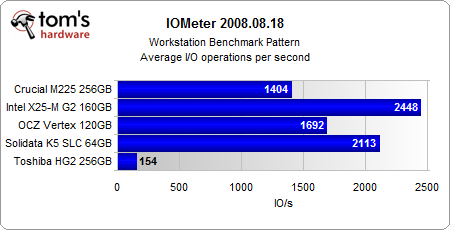
Workstation performance involves lots of random writes, which is why Toshiba lags. Once again, Intel dominates, followed by the Indilinx-powered SSDs.
I/O tests have little relevance in everyday life unless your applications trigger requests similar to the workloads we utilize. If you multitask a lot, Iometer results might prove relevant. Otherwise, I/O shouldn't be a major factor in your purchasing decision.
Get Tom's Hardware's best news and in-depth reviews, straight to your inbox.
Current page: Benchmark ResultS: Access Time And I/O Performance
Prev Page Comparison Table And Test Setup Next Page Benchmark Results: Throughput, Streaming, 4K Testing, Interface